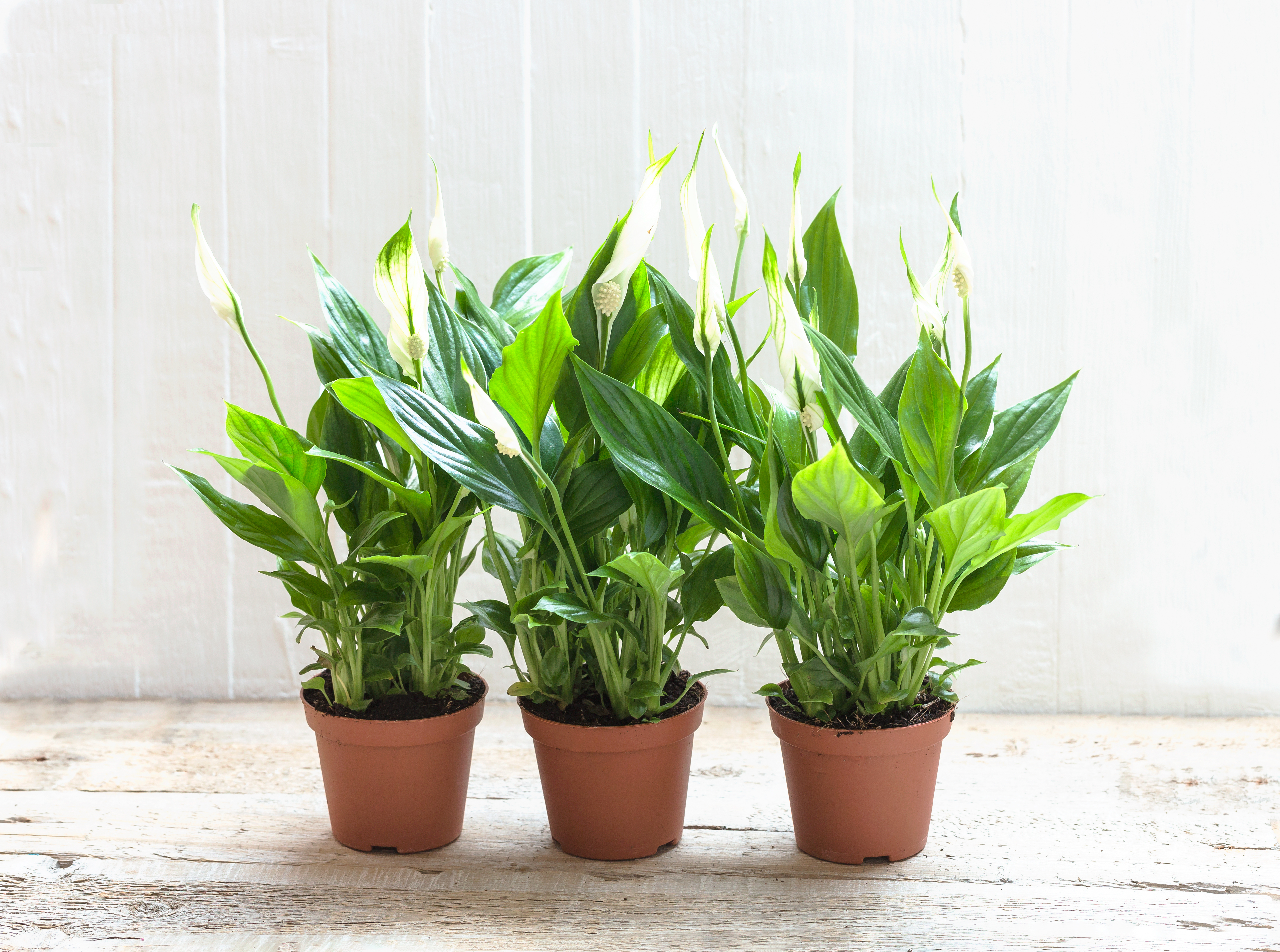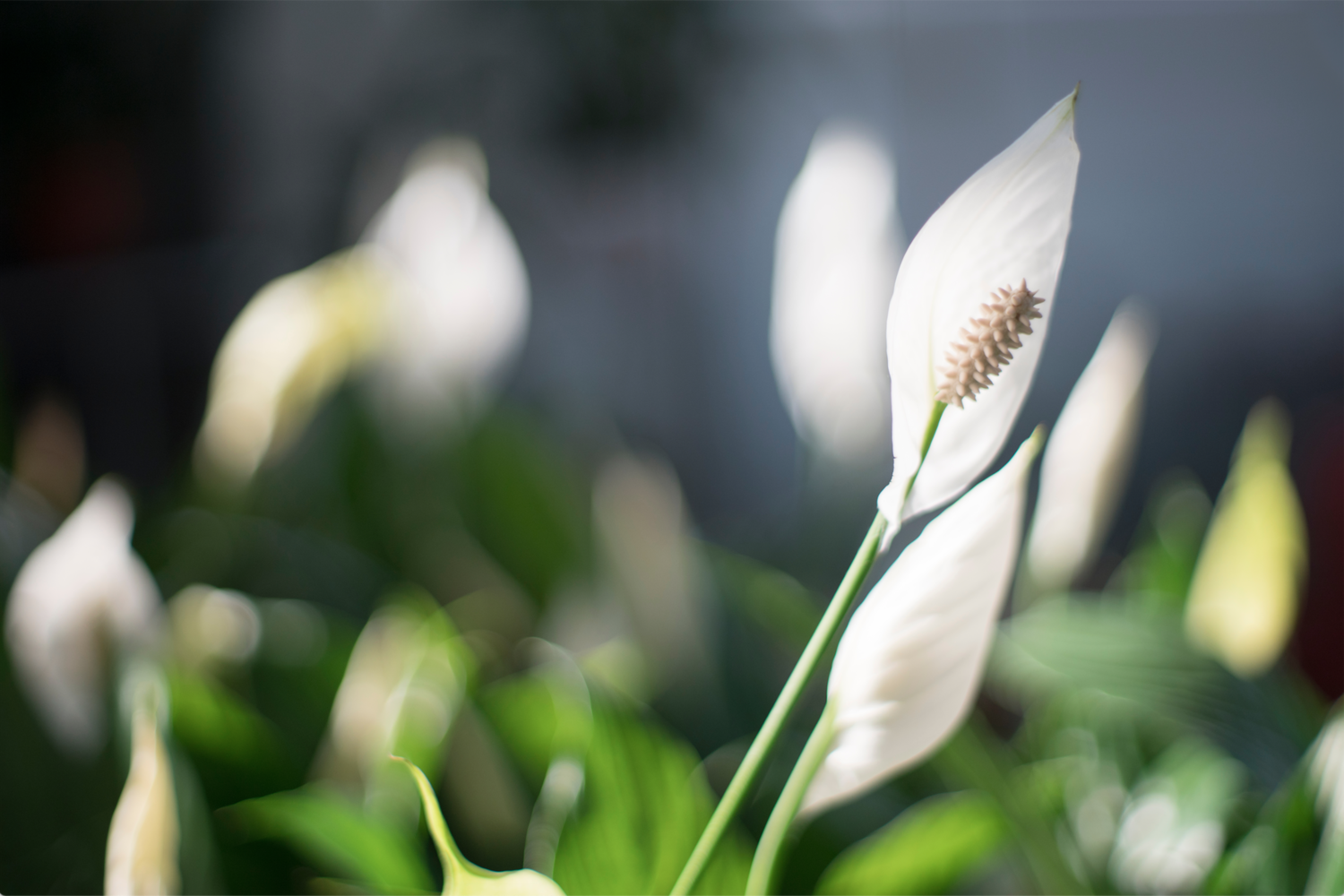Origin
The Peace Lily is a beautiful deep green and white tropical plant that first had its home in the rainforests of South America. They were then introduced to Europe in 1870, and have since become a hugely popular houseplant. They're not actually a true lily, as they belong to a different family (the Araceae family) - they are called lilies as their flowers are said to look similar to Calla lilies. Their peaceful name comes from the fact that their white flowers somewhat resemble a ceasefire flag, hence they signal peace.

Care
Their tropical native land means that Peace Lilies are well-adapted to warm, humid environments with dappled light. They don't take too kindly to getting lots of direct sunlight, as they're forest floor plants. In their natural environment, sunlight is filtered through the leaves and trunks of taller plants and trees, so they're accustomed to shadier conditions. Bright light can scorch their leaves, so try to keep them away from harsh sunlight.
They make a great addition to your bathroom or kitchen, where they'll enjoy the high humidity and warmth, but you can also try replicating these conditions in a different room by regularly misting and keeping your heating on. Just don't place your Peace Lily too close to a heat source, as this can cause it to dry out, which is the last thing it wants! Peace Lilies love moisture and need quite a lot of water to stay happy. It's actually even possible to grow your Peace Lily directly in water. However, if you do keep it in soil, make sure it's well-draining and that your pot has drainage holes. As much as these plants love water, they don't want to drown in it, so it's important that excess water is able to drain out. You want to keep the soil moist but not overly wet.
Don't worry too much if you accidentally miss a watering - they can survive a short drought period, although you may notice that the leaves start to droop and or brown. Although it can be sad to see your Peace Lily droop, it can be a handy indicator that your plant needs attention.

Other
Note that Peace Lilies are toxic to both humans and animals. Their toxicity comes from the fact that these plants contain a substance called calcium oxalate, which can potentially have harmful side effects if accidentally ingested. For this reason, Peace Lilies should be kept out of reach of curious pets and children.
Their wide leaves can give a great indoor jungle effect, however, they can also collect dust pretty easily. Dusty leaves can interfere with photosynthesis, which could potentially have a detrimental effect on your plant's health - especially if left for a longer period of time. Therefore, you should clean the leaves every now and then. You can do this by gently wiping both the underside and the top of the leaves with a soft, damp cloth. Alternatively, you can pop it in the shower and give it a gentle rinse all over. If you do this, make sure the water pressure is very low and that the excess water is able to drain away.
No flowers? Make sure that it gets enough light.
If your Peace Lily isn't flowering, you can try providing it with more access to light. Also try to keep it out of reach of drafts if possible. It could otherwise be that your Peace Lily is just too young, as only a mature one will flower. Give it some time and try to make sure its overall health is otherwise good, and you should eventually be rewarded with some beautiful flowers.
Finally, another interesting thing about this plant is that they are great air cleaners! They help remove toxins from the air, and so make a great addition to your home or office.
